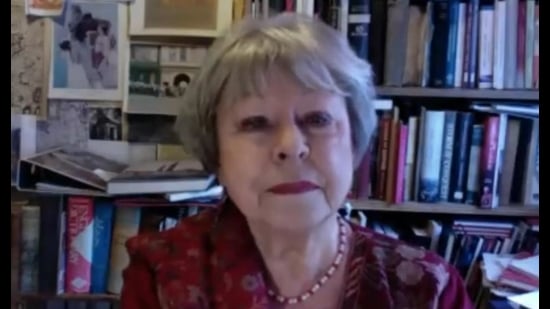Rosie Llewellyn-Jones: How the British re-captured Awadh in 1857!
Celebrated author Dr Rosie Llewellyn-Jones gave an insight during an online session ‘Battlefield Lucknow’ held as a part of Sanatkada Lucknow Festival.
During the start of the uprising (1857) in Awadh, when Indian sepoys in the Cantonment raised their voice, the British identified 20 ‘rebel’ sepoys and had found them guilty of plotting against the British, and they were hanged for their intent.

Celebrated author Dr Rosie Llewellyn-Jones gave an insight during an online session ‘Battlefield Lucknow’ held as a part of Sanatkada Lucknow Festival. She said that the first battle was held around Chinhat (in June 30, 1857) which had 5,000 armed Indian men and they defeated British killing 120 persons. Freedom fighters had surrounded Residency where around 3,000 British, Anglo-Indians and loyal Indian soldiers and servants were living. The mutineers had brought down the Union Jack.
She showcased a rare original painting of Begum Hazrat Mahal and Birjis Qadr (who was crowned king at the Qaiserbagh complex). The picture is from Wajid Ali Shah’s biography ‘Ishqnaama’, preserved at Windsor Castle, UK. In that period, the Talukdar families in Awadh had their small armies, half of Shah’s royal army (60,000 persons) was disbanded of whom many joined the rebels, and Begum Hazrat Mahal with local support, had opened a front against British.
To capture Lucknow back, the British had made Alambagh their base. In September, 1857, General Havelock and James Outram made their way into the Residency. Outram in his third attempt got successful in getting inside Lucknow. Later, Havlock died of dysentery and is buried in Alambagh.
Jones talked about the fiercely-fought battle at Sikanderbagh where 2,000 Indians were killed while 60-70 British were killed. “When the British swarmed in, the mutineers were shooting from the top of trees and when the British shot back an African woman, an ex-bodyguard of King, fell down. Unfortunately, we don’t know about her and she is probably one of the many unsung heroes of the time,” she said.
A “second relief” on the Residency by Colin Campbell helped the British escape from the Residency through the Chattar Manzil to Dilkusha by the river in November. By March, 1858, they were in complete command. They left the main city but retained a base at Alambagh.
She tells how British were able to win Lucknow. “They had firepower (canons), superior gun-power and a large number of soldiers. The mutineers did not have uniform leadership. British made inroads through buildings and bungalows – Bibiapoor Kothi, Dilkusha, La Martinere, Begum Kothi, Sabistainbad Imambara, Bank Bungalow and Qaiserbagh. Hazrat Mahal fled to Musabagh and then to Nepal, where she died and is buried, while Bijlis Qadar was poisoned later.”
Jones is coming up with her new book ‘India’s Battles: A Series - Lucknow 1857) later this year.




